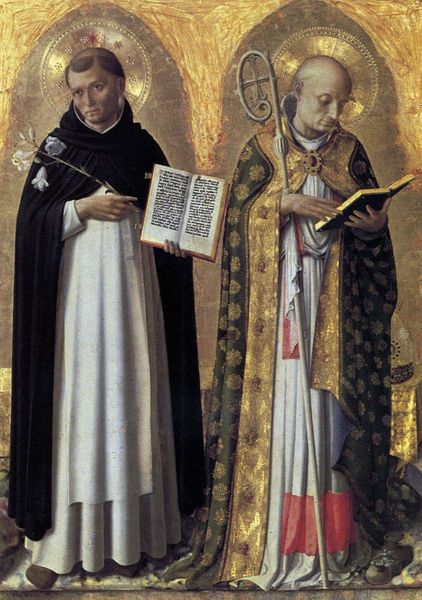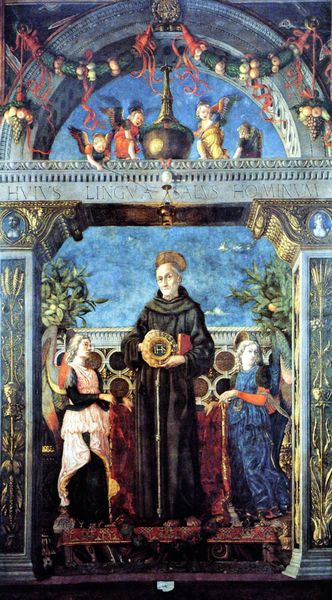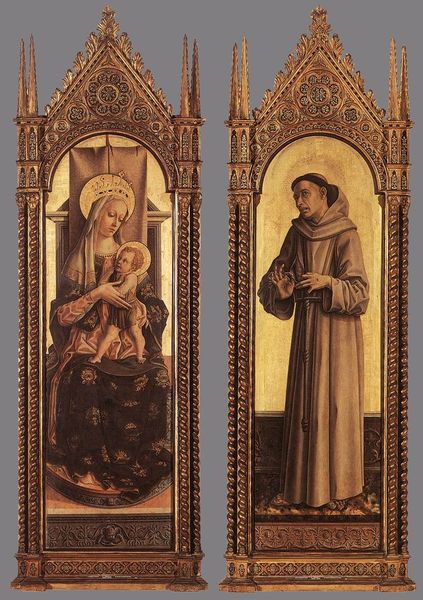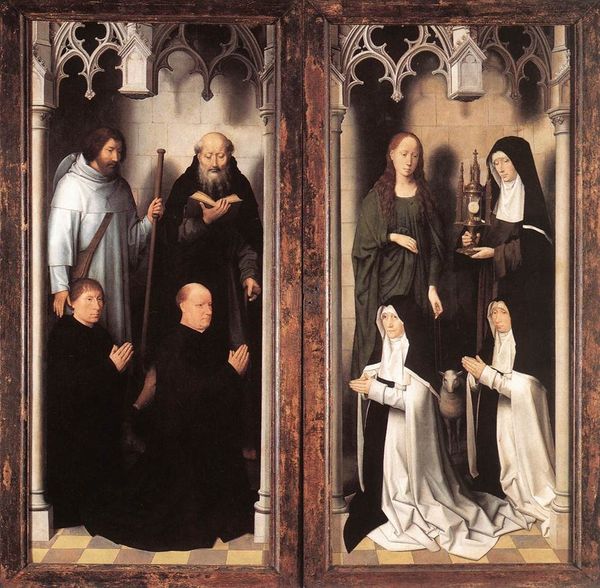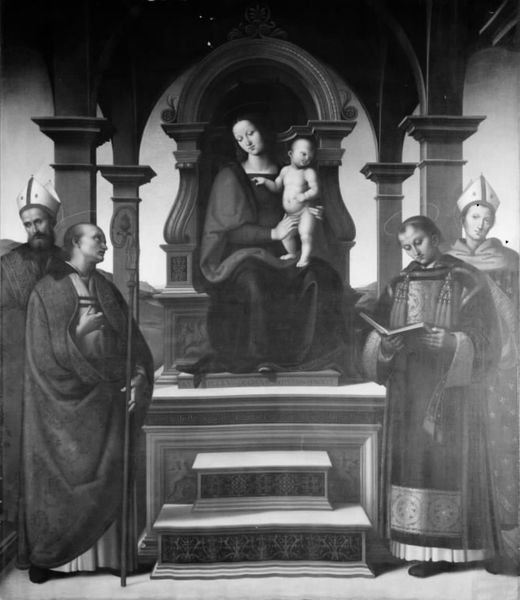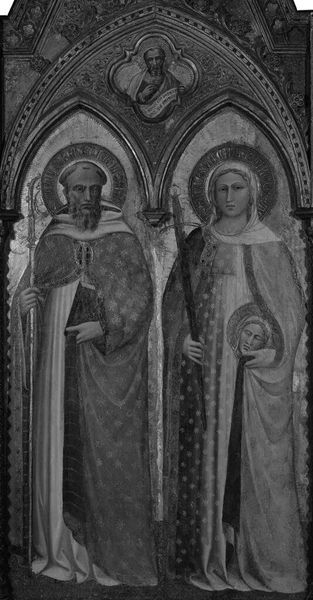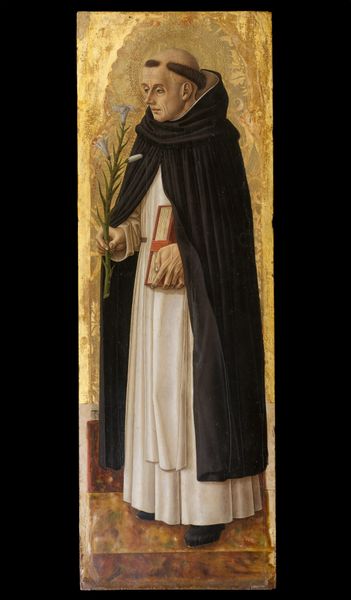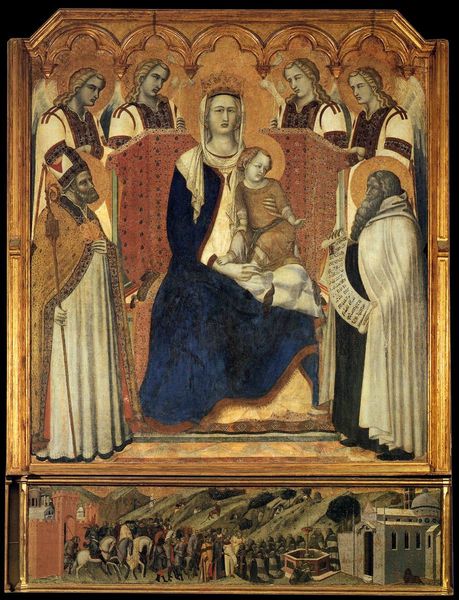
St. Francis and St. Elizabeth 1460
0:00
0:00
pierodellafrancesca
National Gallery of Umbria (Palazzo dei Priori), Perugia, Italy
painting, oil-paint
#
portrait
#
narrative-art
#
painting
#
oil-paint
#
sculpture
#
charcoal drawing
#
figuration
#
oil painting
#
history-painting
#
italian-renaissance
#
early-renaissance
Dimensions: 124 x 64 cm
Copyright: Public domain
Piero della Francesca painted St. Francis and St. Elizabeth with tempera on wood, a common practice for altarpieces at the time. But consider how the material nature of this work informs its meaning. The smooth, almost porcelain-like surfaces speak to the artist’s mastery of the medium. Tempera, made from egg yolk, demands a meticulous, layered application. Think about the labor involved. Each layer requires patience, precision, and a deep understanding of the materials at hand. This painting, with its tranquil depiction of saints, reflects a culture deeply rooted in craftsmanship. It’s a testament to the value placed on skilled handwork during the Renaissance. The gold leaf, another meticulously applied material, not only adds to the painting's aesthetic value but also signifies wealth and status, reflecting the patronage system that supported artists like Piero della Francesca. Looking at this work, we can appreciate how much the materials and making are tied to wider social issues of labor, politics, and consumption. It challenges any strict divide between art and craft.
Comments
No comments
Be the first to comment and join the conversation on the ultimate creative platform.
